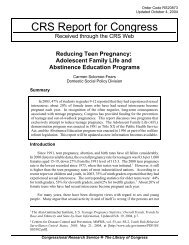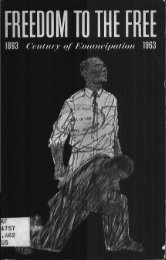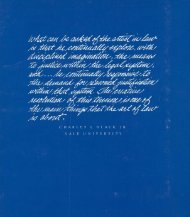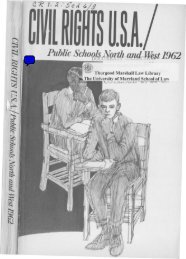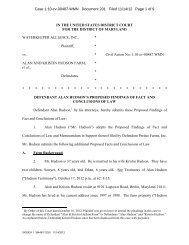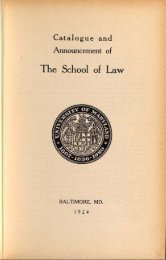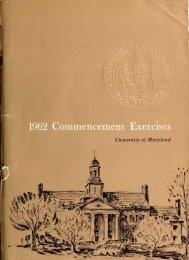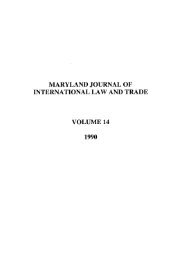Obscenity, Child Pornography, and Indecency - University of ...
Obscenity, Child Pornography, and Indecency - University of ...
Obscenity, Child Pornography, and Indecency - University of ...
You also want an ePaper? Increase the reach of your titles
YUMPU automatically turns print PDFs into web optimized ePapers that Google loves.
CRS-4<br />
First Amendment upside down. The Government may not suppress lawful speech as a<br />
means to suppress unlawful speech.”<br />
In response to Ashcr<strong>of</strong>t, Congress enacted Title V <strong>of</strong> the Prosecutorial Remedies <strong>and</strong><br />
Other Tools to end the Exploitation <strong>of</strong> <strong>Child</strong>ren Today Act <strong>of</strong> 2003, or PROTECT Act,<br />
Public Law 108-21. This statute prohibits any “digital image, computer image, or<br />
computer-generated image that is, or is indistinguishable from, that <strong>of</strong> a minor engaging<br />
in sexually explicit conduct. It also prohibits “a visual depiction <strong>of</strong> any kind, including<br />
a drawing, cartoon, sculpture, or painting, that ...depictsaminorengaginginsexually<br />
explicit conduct,” <strong>and</strong> is obscene or lacks serious literary, artistic, political, or scientific<br />
value. Section 603 <strong>of</strong> the PROTECT Act amended the CDA to apply to child<br />
pornography transmitted via the Internet.<br />
<strong>Child</strong> <strong>Pornography</strong>: Pending Issues<br />
To the extent that the PROTECT Act prohibits non-obscene child pornography that<br />
was produced without the use <strong>of</strong> an actual child, it may be challenged as unconstitutional.<br />
<strong>Indecency</strong> 13<br />
“<strong>Indecency</strong>” has no precise definition. The Supreme Court has said that “the normal<br />
definition <strong>of</strong> ‘indecent’ merely refers to nonconformance with accepted st<strong>and</strong>ards <strong>of</strong><br />
morality.” 14 More specifically, the term has been defined as material that “depicts or<br />
describes, in terms patently<strong>of</strong>fensive as measured bycontemporarycommunityst<strong>and</strong>ards,<br />
sexual or excretory activities or organs.” 15<br />
Indecent material is protected bythe First Amendment unless it constitutes obscenity<br />
or child pornography. Indecent material that is protected by the First Amendment may<br />
be restricted by the government only “to promote a compelling interest” <strong>and</strong> only by “the<br />
least restrictive means to further the articulated interest.” 16 The Supreme Court has<br />
“recognized that there is a compelling interest in protecting the physical <strong>and</strong> psychological<br />
well-being <strong>of</strong> minors. This interest extends to shielding minors from the influence <strong>of</strong><br />
literature that is not obscene by adult st<strong>and</strong>ards.” 17<br />
13 For additional information, see CRS Report 95-804, <strong>Obscenity</strong> <strong>and</strong> <strong>Indecency</strong>: Constitutional<br />
Principles <strong>and</strong> Federal Statutes.<br />
14 Federal Communications Commission v. Pacifica Foundation, 438 U.S. 726, 740 (1978).<br />
15 This quotation is from 47 U.S.C. § 223(d), a provision <strong>of</strong> the CDA that the Supreme Court held<br />
unconstitutional. This definition is similar to the FCC’s definition <strong>of</strong> “indecent” in the context<br />
<strong>of</strong> dial-a-porn <strong>and</strong> broadcast media. See, Dial Information Services Corp. v. Thornburgh, 938<br />
F.2d 1535, 1540 (2d Cir. 1991), cert. denied, 502 U.S. 1072 (1992); Pacifica, supra note 14, 438<br />
U.S., at 732.<br />
16 Sable Communications <strong>of</strong> California v. Federal Communications Commission, 492 U.S. 115,<br />
126 (1989).<br />
17 Id.



